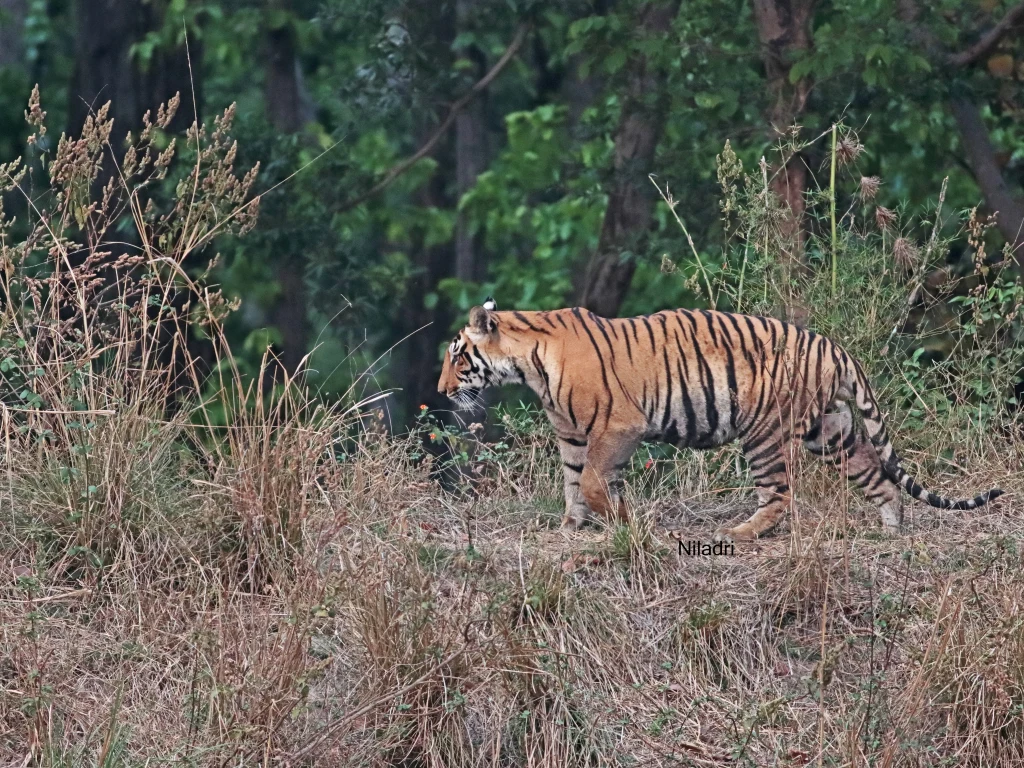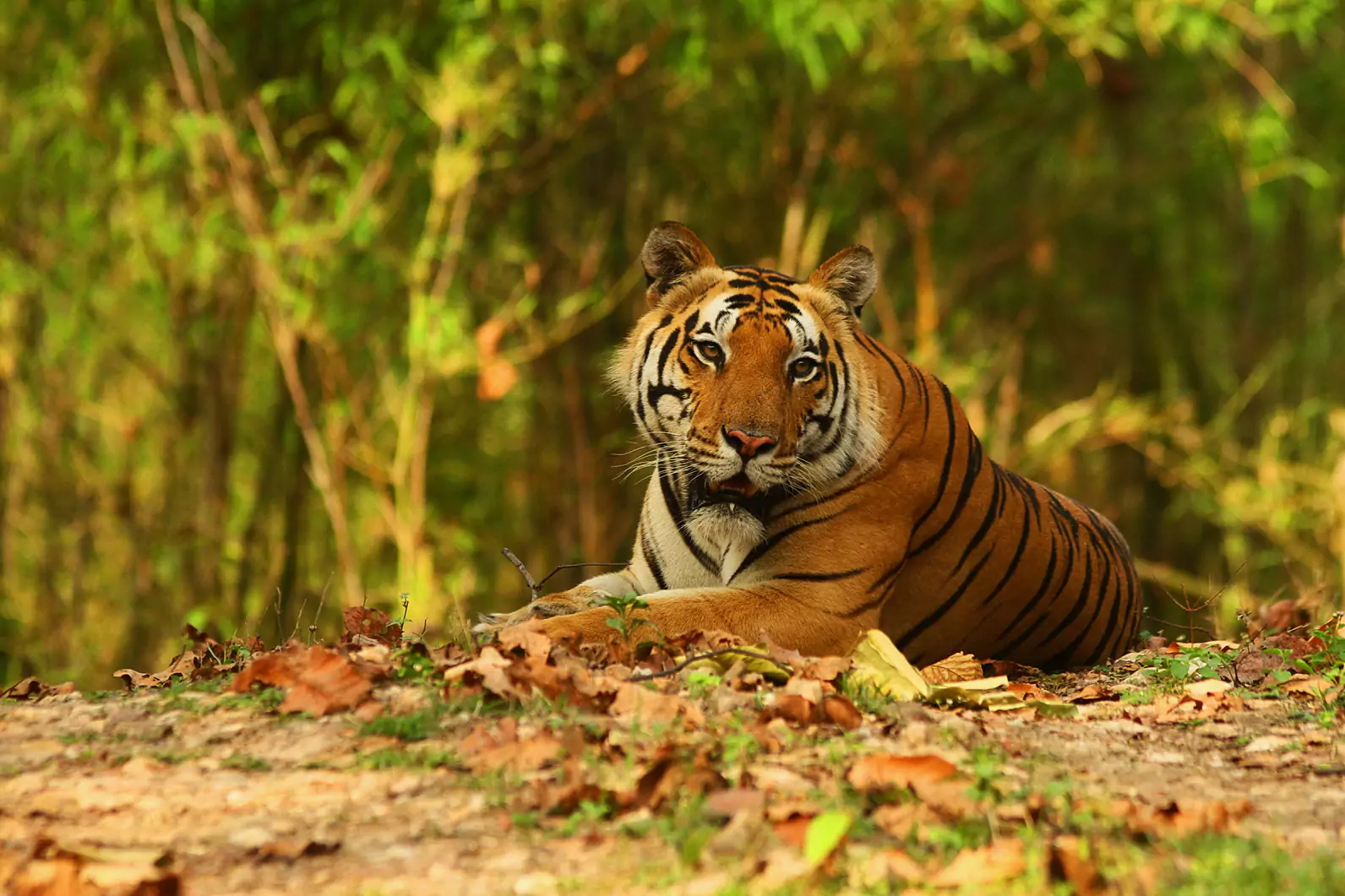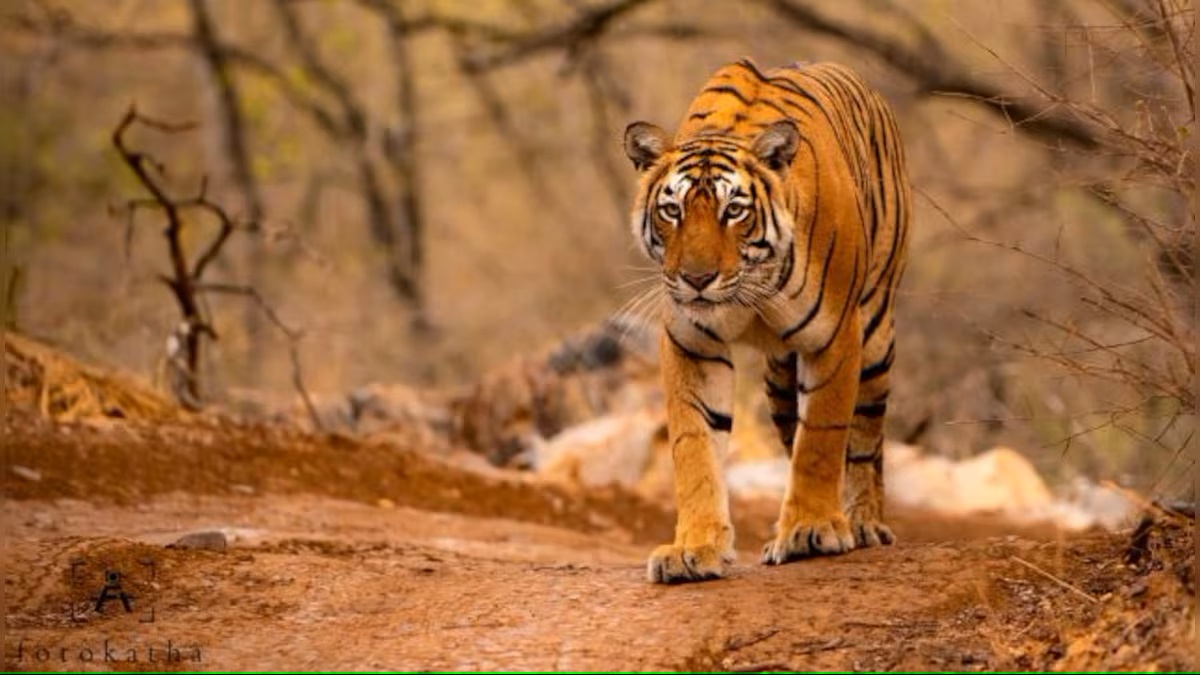Sighting three generations of tigers in Kanha was a deeply fulfilling experience after observing Chotta Munna in the first week of October. This was followed by the exciting news of Dhawajhandi Tigress, spotted with her litter of four cubs. The experience was deeply satisfying, as it marked the completion of following a particular tiger family’s lineage through three generations. However, the joy was short-lived as the fourth generation, sired by Chotta Munna, was already in the making. It is believed that Dhawajhandi Tigress had mated with Chotta Munna, and her four cubs were spotted on October 16th, 2017. This sighting filled me with anticipation as I hoped to witness four generations of tigers, a rare and extraordinary event.
The Legacy of the Limping Male Tiger

The journey of these three generations begins with the Limping Male, the patriarch of the family. This tiger ruled the Mukki region of Kanha for an extensive period, and it was largely due to his reign that his son, Munna, couldn’t settle in Mukki and was instead pushed to the Kisli region. Munna, in turn, often ventured into Sarhi and occasionally the buffer zones. I first encountered the Limping Male in February 2008, sitting majestically in his territory. The name “Limping Male” was given because of an ongoing foot injury that caused him to limp. Despite the pain, he remained a formidable force in his domain. His injury was treated by the forest department, and during that moment, I had the rare opportunity to witness him surrounded by four elephants. That was the last time I saw him.
Munna: The Legendary Tiger of Kanha

The baton was passed on to Munna, the legendary son of the Limping Male. In the summer of 2009, I first saw Munna from atop an elephant in the Kanha zone. At that time, Munna was cooling off next to a water hole. His unique forehead mark, “CAT,” made him easily recognizable, and he was already around seven years old. Now, at over 15 years old, Munna continues to rule the Kanha landscape. His strength and dominance have been remarkable, a testament to the exceptional genes he inherited. Munna’s intelligence and strategic approach to territory management have been key to his longevity. He knows when to retreat and when to challenge, which has allowed him to eliminate many rival tigers from his territory.
Even at 15, Munna remains a powerful tiger, still making regular kills in the forest. Though he is now rarely seen, every sighting of him is celebrated by tourists, guides, and drivers alike. His presence in Kanha led to many other male tigers dispersing, which helped ensure that only the best genes remained in the area. Munna’s legacy lives on through his sons, Umarpani Male and Chotta Munna, who have inherited his exceptional traits.
Umarpani Male: The First of the Third Generation

The third generation of tigers began with the birth of Umarpani Male, whose mother was a strong tigress known as the Umarpani Female. Munna, not willing to let his son settle close to his territory, pushed Umarpani Male into the Limping Male’s territory. This turn of events proved to be a blessing for Umarpani, who now rules his domain with great strength. Umarpani Male is one of the largest tigers I have ever encountered in my 28 years of safari experience. His immense size and commanding presence are matched by his attitude, making him a true beast. In December 2015, Umarpani Male even delivered a fatal blow to Kingfisher (Rajaram), further cementing his dominance in the region.
Umarpani Male has mated with Mahaveer Tigress and has produced four cubs. If I happen to see them in December, I will have witnessed the fourth generation of this tiger family, completing a rare and extraordinary lineage.
Chotta Munna: The Second of the Third Generation

The second prominent member of the third generation is Chotta Munna, also known as Link 7 by some or Linku by others. Chotta Munna is the son of Munna and the Link 7 female. Though initially considered too young and reckless to challenge other tigers, Chotta Munna proved his mettle early on by taking on dominant tigers such as Bheema, Kingfisher, and even Umarpani Male. His boldness and ability to survive these confrontations earned him respect in Kanha.
Chotta Munna’s strength and cool-headed approach to domination have made him a force to be reckoned with. Despite facing severe injuries in some of his early battles, he emerged stronger each time. I was fortunate enough to witness him on 4th October in the Mukki region. His combat with Bheema in 2015, which led to Bheema’s death, was a turning point for the tiger population in Kanha. While it saddened many who admired Bheema, it was understood that only the strongest genes would continue to thrive.
Today, Chotta Munna is well-established as one of the dominant tigers of Kanha. With the recent sighting of Dhawajhandi Tigress and her litter, it is highly likely that Chotta Munna is the father of the new cubs, marking the beginning of the fourth generation of tigers in this family tree.
The Fourth Generation: A New Beginning
With Dhawajhandi Tigress’s new litter, the fourth generation of tigers is on the horizon. This litter is likely sired by Chotta Munna, and I eagerly await the chance to see these cubs and witness four generations of tigers from the same family. The sighting of these young cubs would complete an extraordinary lineage that spans across multiple generations of tigers. Each generation, from the Limping Male to Chotta Munna, has contributed to shaping the future of tiger conservation in Kanha.
Wild Earth Safari and Conservation
My experiences with these tigers have not only been fulfilling on a personal level but have also fueled my passion for wildlife conservation. Over the years, I have come to realize that the survival of these majestic creatures is intricately tied to sustainable tourism and conservation efforts. This is the core philosophy behind Wild Earth Safari, a venture dedicated to promoting wildlife conservation through tourism.
Through Wild Earth Safari, I aim to continue my journey of observing and protecting the tiger species, ensuring that future generations will have the opportunity to experience the grandeur of these incredible animals. By creating awareness and fostering a deeper connection between people and wildlife, we can contribute to the preservation of Kanha’s rich biodiversity and ensure the survival of these magnificent creatures for years to come.
As I look forward to the future, I am filled with hope and excitement, knowing that the legacy of Kanha’s tigers will continue through the efforts of conservationists, wildlife enthusiasts, and safari operators dedicated to protecting these regal animals. I invite you to join me on this journey of discovery and conservation at Wild Earth Safari, where every sighting of a tiger is not just a moment of awe, but a step toward preserving the wild wonders of our world.
Conclusion
The three generations of tigers in Kanha are not just a testament to the resilience and strength of these animals but also a symbol of the importance of conservation. As I continue my journey to witness the fourth generation, I remain committed to supporting the conservation of these incredible creatures. Through the work of Wild Earth Safari, I hope to inspire others to join this mission and ensure that future generations can experience the thrill and beauty of Kanha’s tigers.

